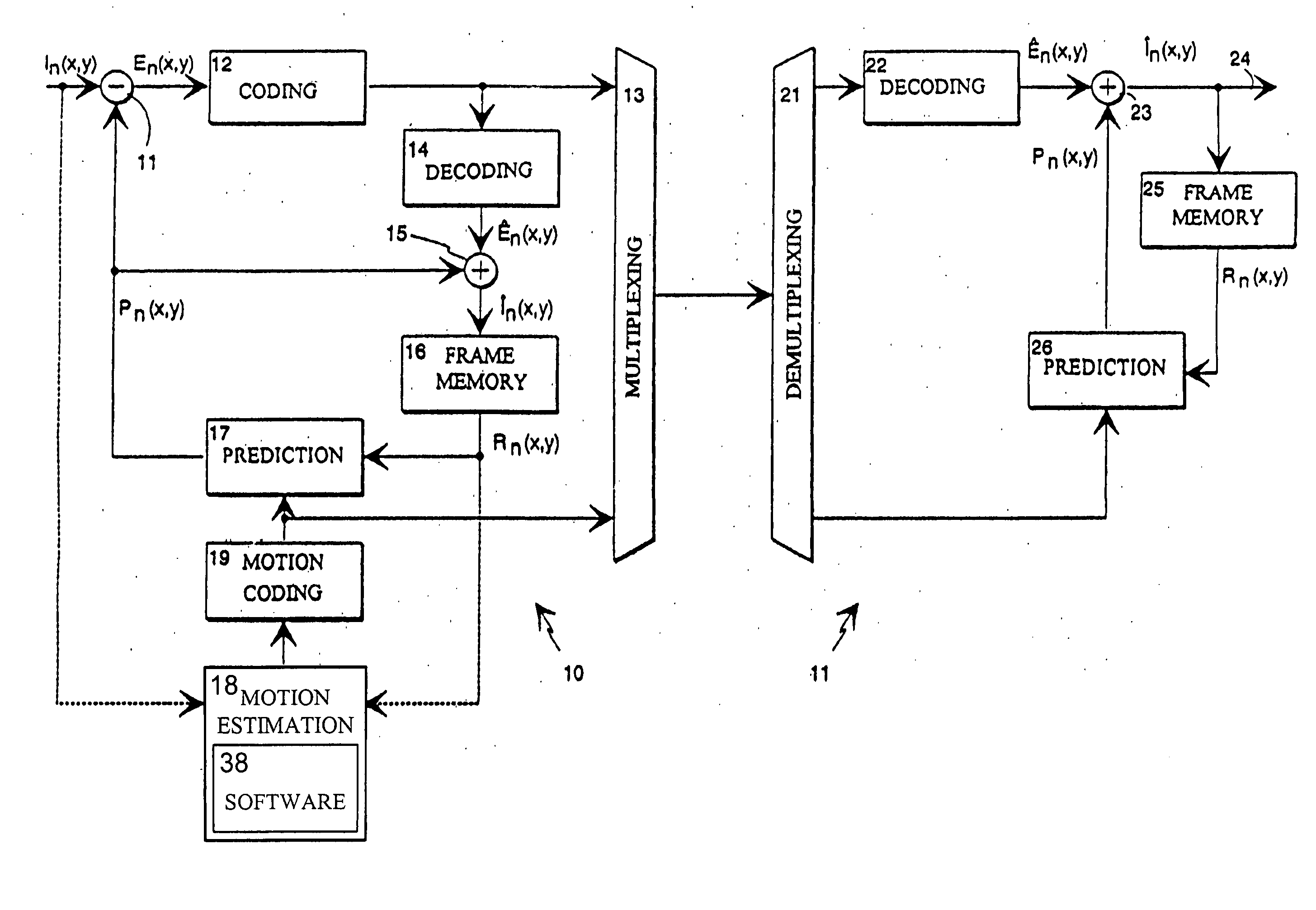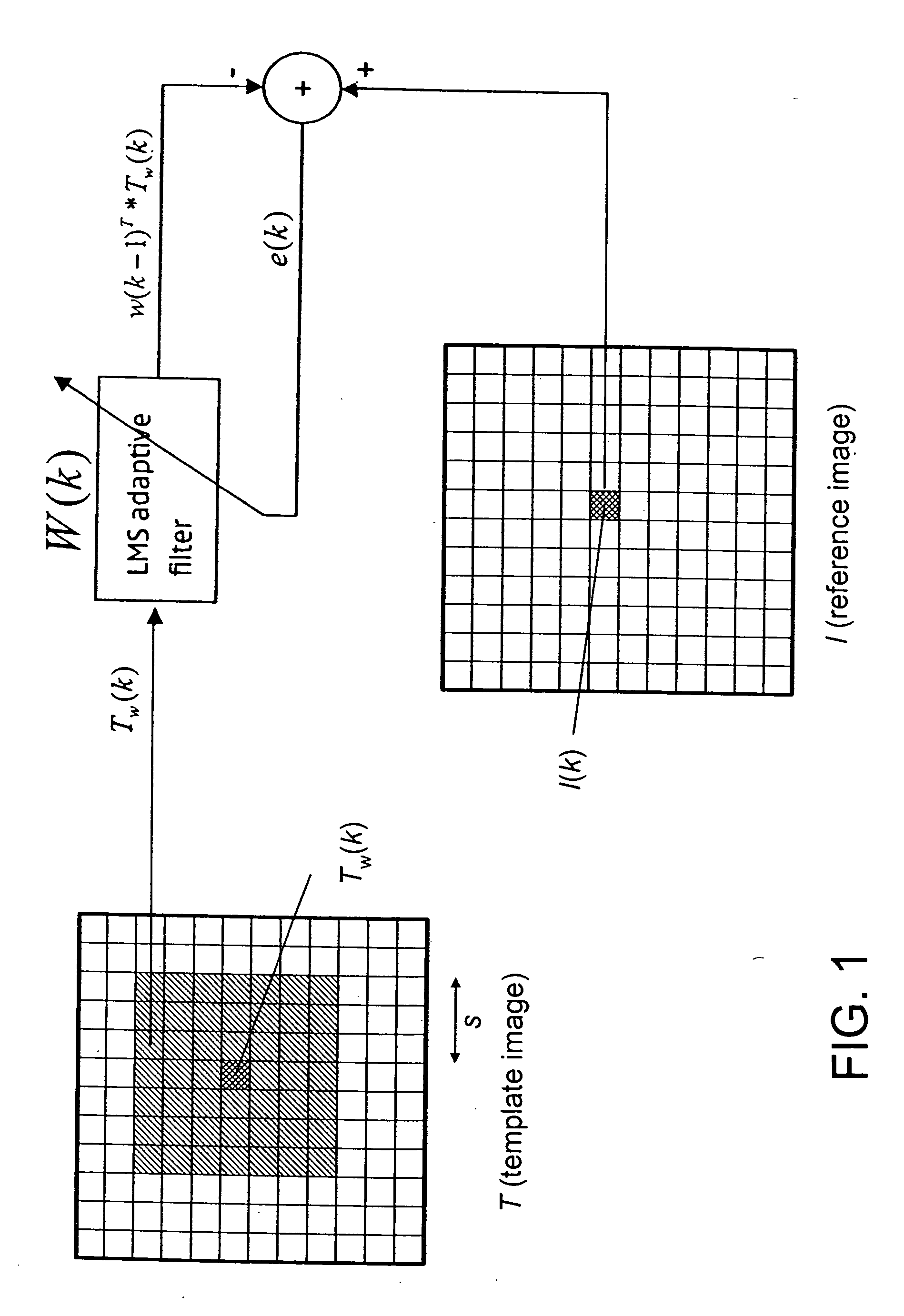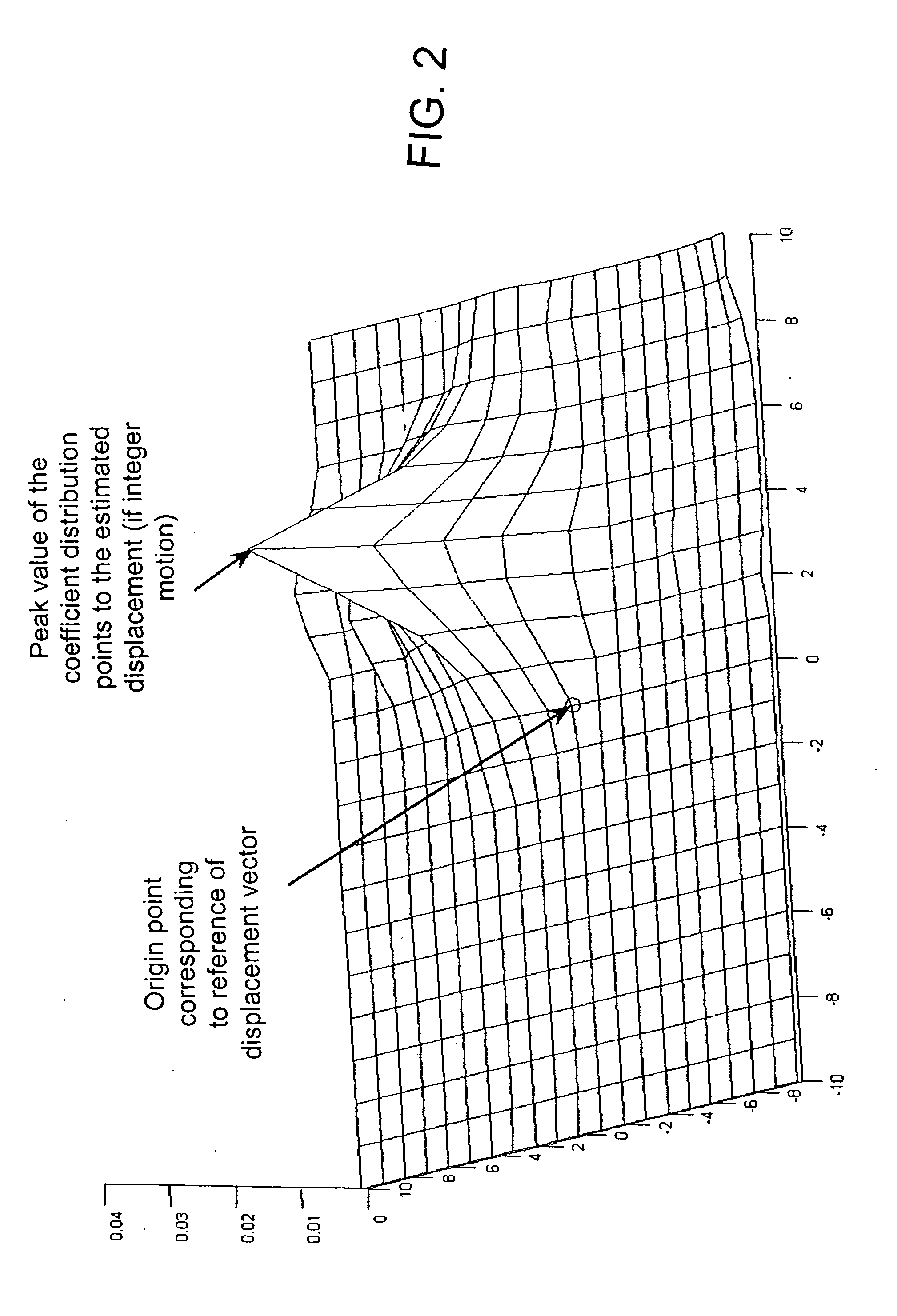Method for optical flow field estimation using adaptive Filting
a flow field and adaptive filting technology, applied in the field of motion estimation, can solve the problems of inefficient direct application of block-based motion estimation in filtering applications such as video image deblurring and noise reduction, and the known methods for estimation of dense optical fields are typically computationally complex
- Summary
- Abstract
- Description
- Claims
- Application Information
AI Technical Summary
Benefits of technology
Problems solved by technology
Method used
Image
Examples
Embodiment Construction
[0016] The present invention involves registering a template image T in a target frame with respect to a reference image I in a reference frame. These two images are usually two successive frames of a video sequence. Both images are defined over the discrete grid positions k=[x,y]T,where 0≦x<X, 0≦y<Y. The image intensities are denoted by I(k) for the reference image and T(k) for the template image. The dense flow field is estimated based on the displacement between the target frame and the reference frame that happened in the corresponding time interval, and is defined as:
D(k)=[u(k),v(k)]T. (1)
[0017] Here D(k) is the displacement vector which need not be an integer valued, and u(k) and v(k) are the corresponding horizontal and vertical components over the two-dimensional grid. With a constrained motion, D(k) is limited by {-s≤u(k)≤s-s≤v(k)≤s
where 2*s+1 is the size of a search area or window that is centered at pixel location T(k) in the template image. The pixels inside thi...
PUM
 Login to View More
Login to View More Abstract
Description
Claims
Application Information
 Login to View More
Login to View More - R&D
- Intellectual Property
- Life Sciences
- Materials
- Tech Scout
- Unparalleled Data Quality
- Higher Quality Content
- 60% Fewer Hallucinations
Browse by: Latest US Patents, China's latest patents, Technical Efficacy Thesaurus, Application Domain, Technology Topic, Popular Technical Reports.
© 2025 PatSnap. All rights reserved.Legal|Privacy policy|Modern Slavery Act Transparency Statement|Sitemap|About US| Contact US: help@patsnap.com



